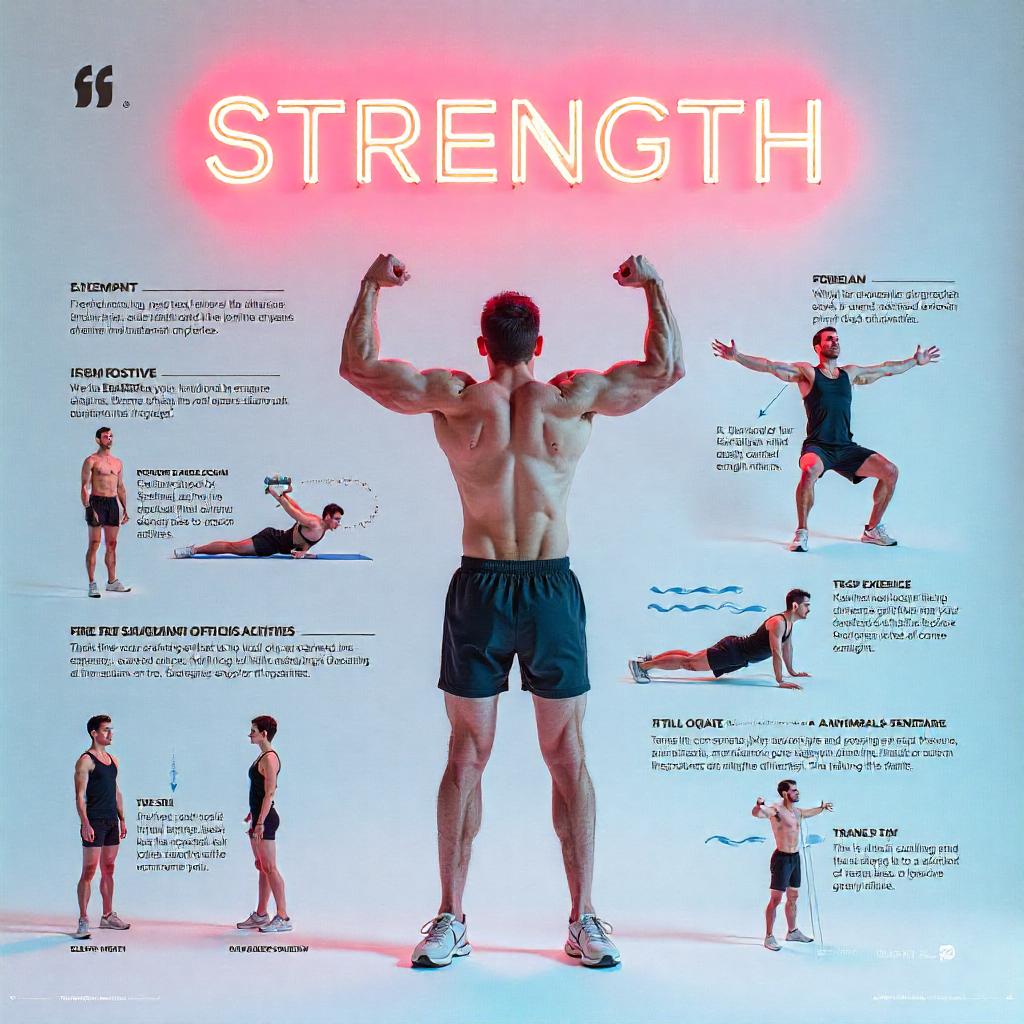Introduction
Building muscle isn’t limited to heavy barbells and powerlifting sessions. If you’re intimidated by the weights section or simply prefer a more accessible approach to strength training, you’ll be happy to know there are effective ways to gain muscle without lifting heavy. Whether you’re working out at home or focusing on low-impact fitness, you can still achieve lean muscle gains through smart training strategies. This guide explores proven techniques to help you build strength and definition without relying on heavy weights.

1. Focus on Time Under Tension (TUT)
Time under tension refers to the amount of time your muscles are actively working during each rep. Slowing down each movement—especially the eccentric (lowering) phase—can make light weights or bodyweight exercises much more effective.
Example: Try lowering into a squat over 3–5 seconds, hold at the bottom for a pause, and then rise up with control.
2. Increase Repetitions and Sets
If you’re not going heavy, go longer. Doing higher reps (12–20) and more sets (3–5) can trigger hypertrophy (muscle growth), especially when exercises are performed to fatigue.
Tip: Focus on form and keep rest periods short to maintain intensity.
3. Incorporate Resistance Bands
Resistance bands add tension throughout the full range of motion and can be just as effective as free weights. They’re great for activating stabilizer muscles and increasing resistance without loading the joints.
Recommended Moves: Banded squats, rows, glute kickbacks, lateral walks, and chest presses.
4. Use Bodyweight with Smart Progressions
Bodyweight exercises like push-ups, squats, planks, and lunges can be modified to stay challenging as you grow stronger. Progress by adjusting angles, increasing reps, or adding isometric holds.
Advanced Variations: Single-leg squats, diamond push-ups, plank reaches, and Bulgarian split squats.
5. Train to Failure (Safely)
Muscle growth is stimulated when you push muscles to fatigue. You don’t need heavy loads to do this—just perform an exercise until your muscles can’t complete another rep with good form.
Warning: Always prioritize safety. Don’t push through sharp pain or improper form.
6. Focus on Muscle Activation and Mind-Muscle Connection
Be intentional with each rep. Feel the muscle you’re working and engage it fully. Sloppy form or rushing through exercises limits results.
Tip: Visualize the muscle contracting and lengthening with each rep.
7. Try Isometric Holds and Pulses
Adding static holds (like holding a squat or plank) or tiny pulses at the end of your set can increase time under tension and challenge your muscles in a new way.
Examples: Wall sits, glute bridges with hold, or pulsing lunges.
8. Optimize Nutrition for Muscle Growth
Even without heavy lifting, your body needs the right fuel to build muscle:
- Protein: Essential for muscle repair and growth
- Carbs: Provide energy for your workouts
- Healthy fats: Support hormone function
- Hydration: Affects performance and recovery
9. Stay Consistent and Track Progress
Consistency is key to building muscle. Track your workouts, note your reps and how you feel after each session, and gradually increase difficulty over time.
10. Prioritize Recovery
Muscles grow during rest, not during workouts. Ensure you’re getting enough sleep, incorporating rest days, and managing stress.
Tip: Consider active recovery like stretching or yoga to keep muscles supple and reduce soreness.

Conclusion
You don’t have to lift heavy to build strong, sculpted muscles. With a smart approach—focused on form, intensity, and consistency—you can achieve impressive muscle gains using light weights, bodyweight, or resistance bands. It’s not about how much you lift—it’s about how well you train.





